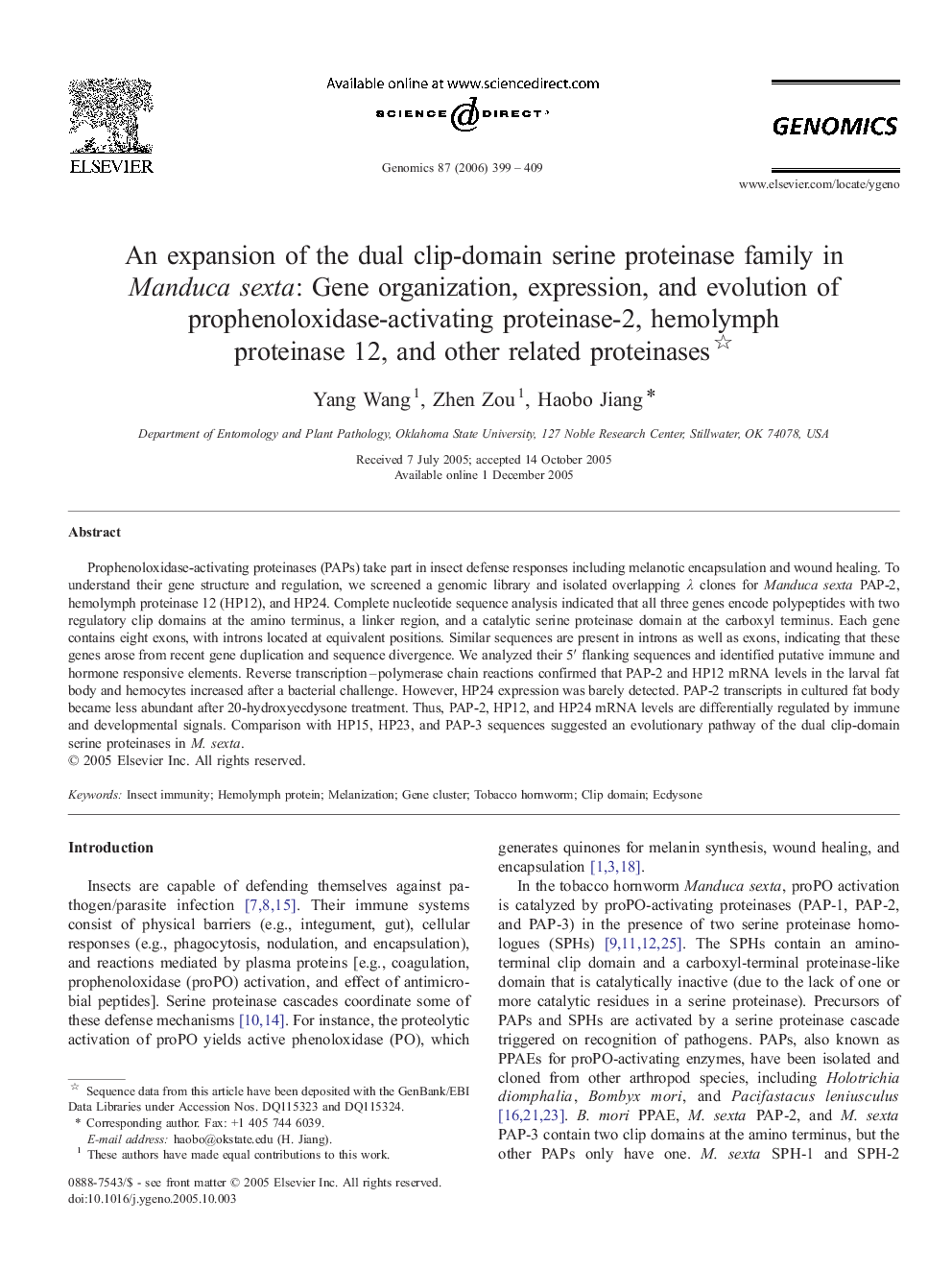| Article ID | Journal | Published Year | Pages | File Type |
|---|---|---|---|---|
| 2821664 | Genomics | 2006 | 11 Pages |
Prophenoloxidase-activating proteinases (PAPs) take part in insect defense responses including melanotic encapsulation and wound healing. To understand their gene structure and regulation, we screened a genomic library and isolated overlapping λ clones for Manduca sexta PAP-2, hemolymph proteinase 12 (HP12), and HP24. Complete nucleotide sequence analysis indicated that all three genes encode polypeptides with two regulatory clip domains at the amino terminus, a linker region, and a catalytic serine proteinase domain at the carboxyl terminus. Each gene contains eight exons, with introns located at equivalent positions. Similar sequences are present in introns as well as exons, indicating that these genes arose from recent gene duplication and sequence divergence. We analyzed their 5′ flanking sequences and identified putative immune and hormone responsive elements. Reverse transcription–polymerase chain reactions confirmed that PAP-2 and HP12 mRNA levels in the larval fat body and hemocytes increased after a bacterial challenge. However, HP24 expression was barely detected. PAP-2 transcripts in cultured fat body became less abundant after 20-hydroxyecdysone treatment. Thus, PAP-2, HP12, and HP24 mRNA levels are differentially regulated by immune and developmental signals. Comparison with HP15, HP23, and PAP-3 sequences suggested an evolutionary pathway of the dual clip-domain serine proteinases in M. sexta.
